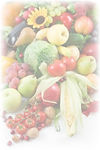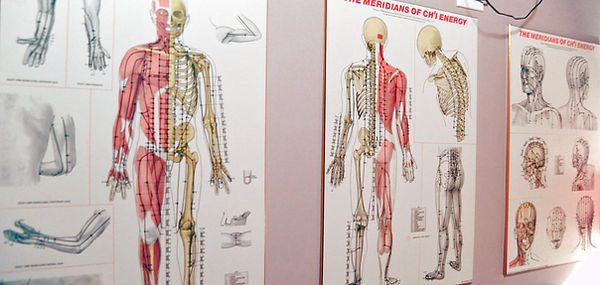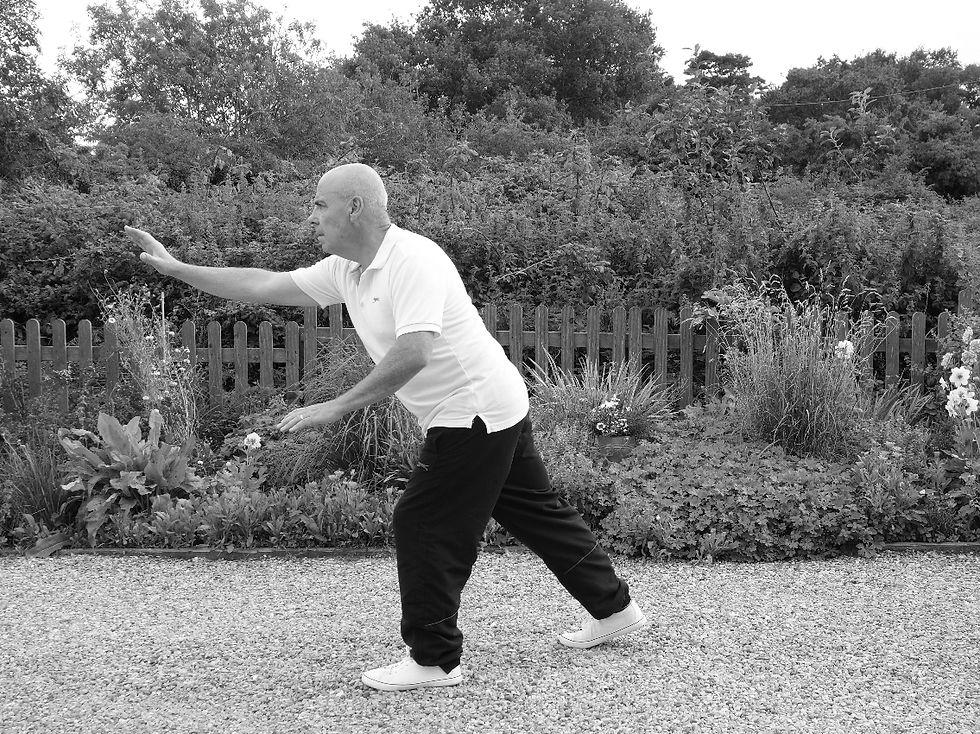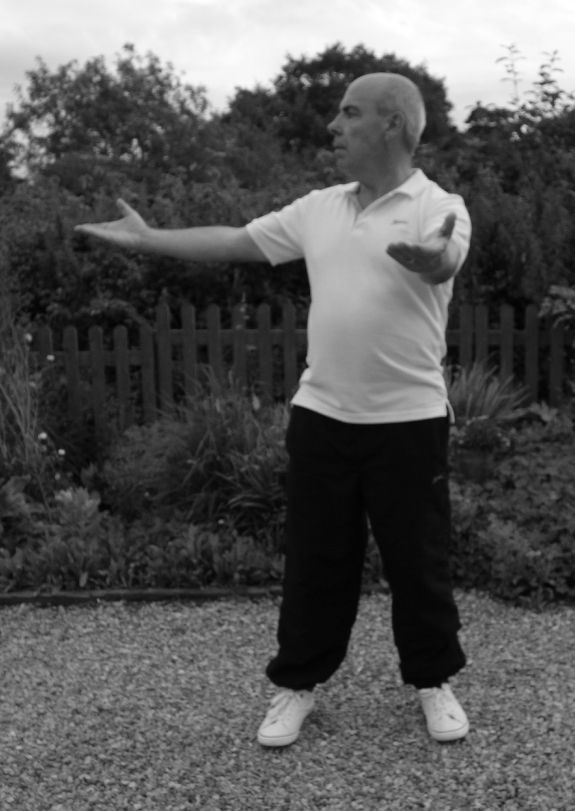

Try these if feeling stressed. Progressive Muscle Relaxation (PMR) is the easier of the two, but both are good.
Important Points of Tai Chi
Regular Practice
To gain benefit from Tai Chi and Qigong, you should practice most days for half hour or so sessions. That may be a difficult goal at first, in which case start low and build up gradually. Start with daily sessions of a few minutes, say 5 minutes at first, or just two minutes. Gradually build up over the coming months. It will be challenging to remember the movements. Just practice what you can remember, even if the series of movements is fragmented. Even just practice the Commencing Form repeatedly. Use the videos below as a memory jogger for what we do in class. Follow along to the video, is not a good way to learn Tai Chi. Instead, watch the movement, pause the video, and then practice. So that gradually you become able to do the movements without needing a prompt. It is not necessary to learn all the movements that we do in class. Have your own goals that work for you.
Inner Relaxation
When practicing Tai Chi, the mind and body should be relaxed.
-
Body
This is achieved by consciously relaxing any unnecessary tension in the muscles. Just enough muscular tension to hold the posture and no more. "Relaxed but not collapsed".
-
Mind
Pay attention to the movements that you are doing. Your mind will wander and you will find yourself doing the movements, but thinking about something else. When you notice that your mind has become distracted, simply return it to focusing on the movements and continue. This process will relax the mind.
Full and Empty
In Tai Chi the body weight is continually moved back and forth from one leg to the other. The leg that carries the body weight is referred to as the "full" leg and the leg that is not carrying any body weight is referred to as the "empty'" leg. Stand on the "full" leg and move the "empty" leg
Movements should be smooth, continuous and fluid...
Move as if under water. Imagining that you have the resistance of the water will enable you to do the movements slowly and smoothly...
Move at One Level
Do the movements with the knees bent a little "sink" and maintain this posture from beginning to end of the Form...

Balance
Take care with your balance. Practice in a spacious environment without trip or fall hazards. Develop your balance gradually and incrementally over time. It helps to have micro-pauses in your movements at critical points to "feel" your balance before continuing. You can keep your empty foot close to or in touch with the ground until confident with your balance...
Begin Tai Chi
front view and back view
Front View
Back View
Amazing Exercise

There is overwhelming evidence from medical science that moderate exercise is very good for fitness, which in turn, leads to improved general health and also mental wellbeing. The benefits of exercise are very extensive and truly amazing. Therefore, the NHS are strong advocates of leading an active lifestyle. The NHS web-site states: "adults should do some type of physical activity every day. Any type of activity is good for you.." Tai Chi is an exercise activity, and thus it will be good for fitness, and therefore improve health, in common with other exercise activities. Ideally, consideration should be given to cross-training with other moderate exercise of aerobic activity and upper body strength training. For example, one or two of the following: brisk walking, jogging, swimming, rowing machine, sit-ups/press-ups, weight training.

The Benefits of Exercise
*Wards off Type 2 Diabetes *Boosts the function and health of the brain and nervous system *Improves bone density *Improves muscular strength *Boosts immune system *Practice outside boosts wellbeing, through being more in touch with nature *Decreases blood pressure *Improves blood circulation *Improves joint function and reduces pain in the case of arthritis and osteoarthritis *Retards ageing of muscles *Has a positive effect on depression and emotional disorders *Improves core strength, protecting the spine *Boosts the production of Endorphins, easing stress and pain *Increases ability to focus in the face of distraction *Blood vessels are wider and more elastic *Improves oxygen delivery to the cells of the body *Raises good cholesterol and lowers bad cholesterol
Healthy Lifestyle

As well as exercise, other issues are important for our health, such as diet, smoking(not) sun protection. A healthy diet is just as important as exercise for good health. An ideal diet is known as flexitarian, where most of the diet is fruit and veg. But with only two to three portions of meat per week. Minimising meat means one still gets enough iron but reduces saturated fats intake. Minimising meat intake is also the best thing people can do to counter global warming. Meat portion size is the size of your own palm). Red meat is best for iron, but chicken is also good. Removing the skin from chicken reduces the saturated fat. Also: Reducing saturated fat is the most important Wholemeal carbs for fibre Increase Omega 3 by eating oily fish, such as Sardines, two to three times per week. Also Walnuts, Linseed and Salmon are good. But watch out on the Tuna as, although it should be ideal, it often has low levels of Omega 3 because it has been removed in processing, and also can contain too high levels of Mercury pollution. (Omega 3 calms inflammation in the body). Best oils are Sunflower or Rapeseed oil. A few nuts are great. Reduce "empty" calories; i.e., food that has little or no nutritional value and only contains calories in the form of sugar, alcohol and fat. Take in more calories than you burn and the excess will be stored by the body as fat. Smoking is very bad for health. Protect your skin from intense sunlight. (Vitamin D supplement can be a good idea).
The Ch'i in Tai Chi
Tai Chi is associated with the concept of Ch'i or Qi, which is often translated as lifeforce energy. Ch'i is said to circulate around meridians in the body, and that the practice of Tai Chi and Qigong helps it to circulate freely, protecting against poor health and disease. Modern medical science does not support the idea of such meridians. Nevertheless, we certainly have energy, and Tai Chi is definitely good for health and wellbeing. This is because Tai Chi is an exercise activity, and all exercise activity is good for health and wellbeing.


Incorrect, the front knee collapses inward.

Correct, the front knee is aligned over the foot. Note: collapsing in of the knee commonly also happens on the rear leg.

Incorrect, the feet are too in-line.

Correct, the feet are shoulder width apart.

Incorrect, hip displaced to the side.

Incorrect, hip displaced to the side.

Correct, hip is in alligned

Incorrect, over-reaching.

Incorrect, pelvis tilted back.

Correct, lower back is relaxed, pelvis tilted forward, tail bone points down toward the ground, Huyunin (perineum) points down toward the ground

Incorrect, hip displaced to the side.

Correct, hip is in line.

Incorrect, the shoulders should be relaxed, and the arms more open.

Incorrect, the shoulder is forced back and not relaxed.

Incorrect, the shoulders are up and not relaxed.

Correct, shoulders are down and relaxed. There is no need to overly stretch the arm behind the body.

Incorrect, the joints of the hand are closed.

Correct, the fingers and thumb are opened out and the Ch'i can extend all the way to the finger tips.
Section 1 of the Tai Chi Yang Style Long Form 88
Section 2 of the Long Form
Section 3 of the Long Form
Just Standing Qigong
Tao; the philosophy behind Tai Chi

Tai Chi 8 Form, front view and back view
Tai Chi Yang Style 24 Short Form
Tai Chi Mixed Styles 48 Form

